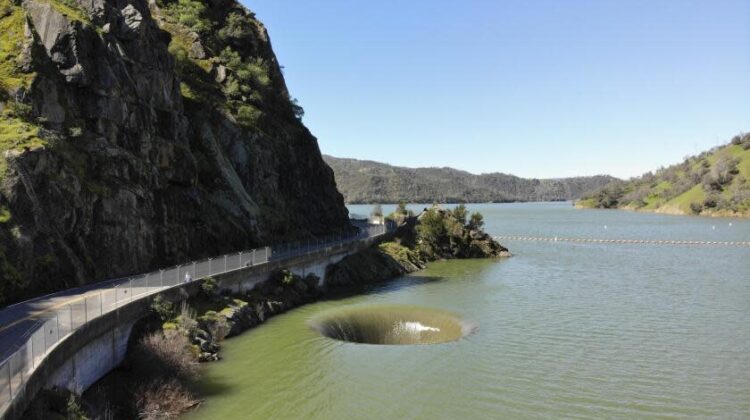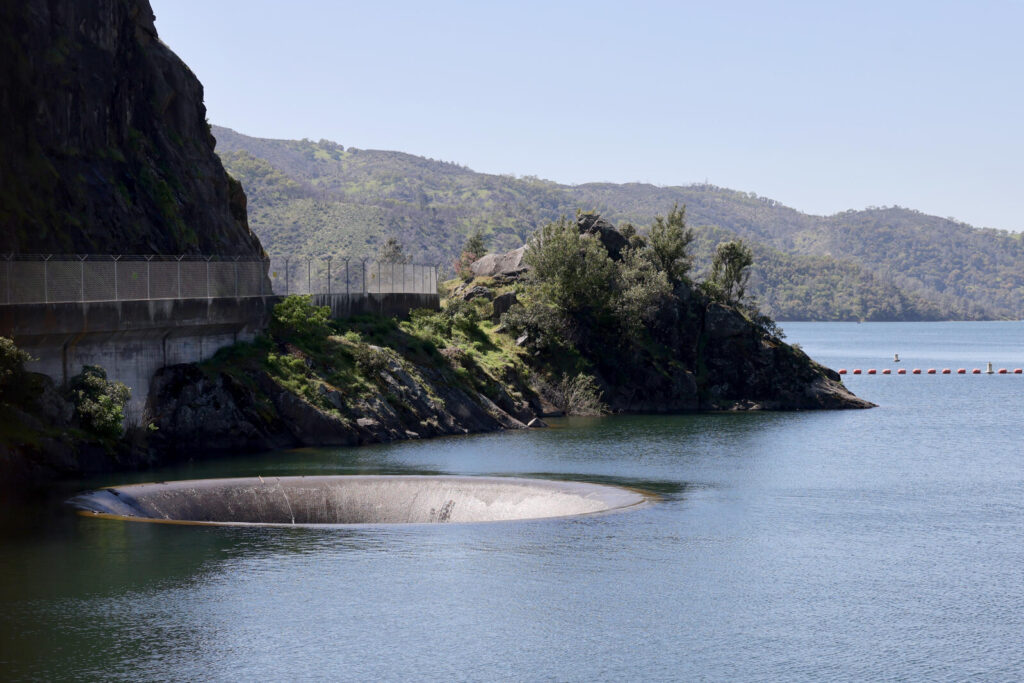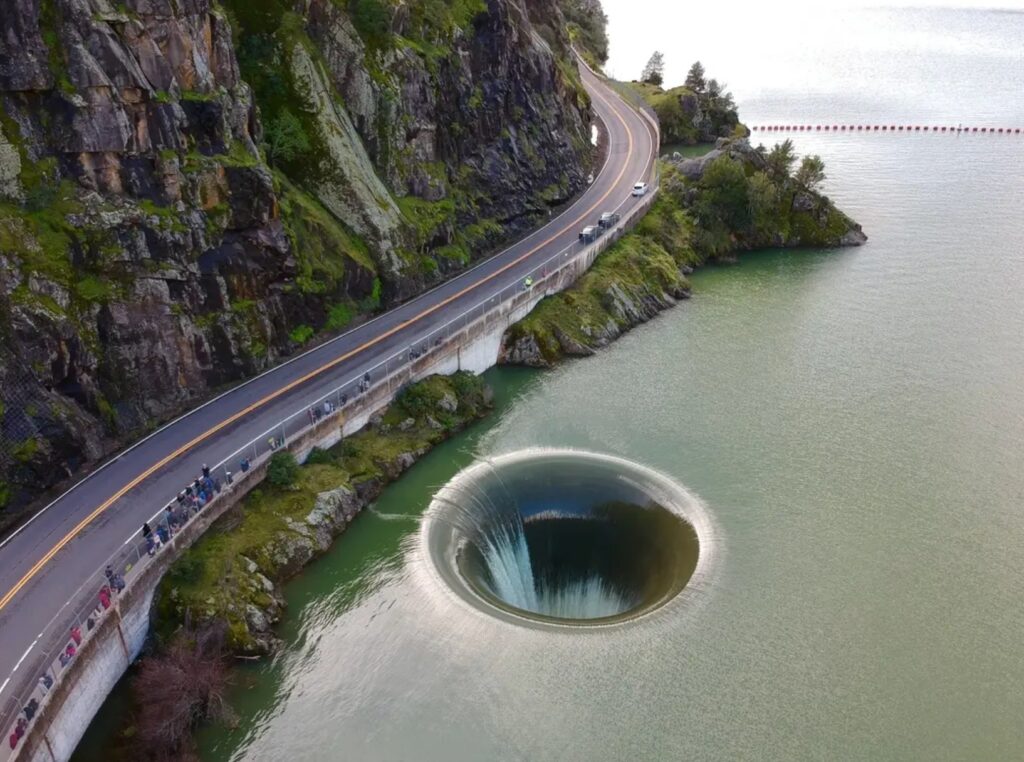
A rare and mesmerizing natural spectacle has returned to Northern California as the famous ‘Glory Hole’ spillway at Lake Berryessa reaches overflow levels for the first time in years. This extraordinary event, triggered by a series of intense atmospheric rivers, is captivating onlookers and water management experts alike.
The Phenomenon Behind the ‘Glory Hole’ Spillway
Lake Berryessa, located roughly 80 miles north of San Francisco, boasts one of the most unique engineering marvels in the country—the Morning Glory Spillway. This massive, circular drain functions as a passive overflow system, automatically siphoning off excess water once lake levels surpass 440 feet. Designed to prevent flooding, this structure has only been activated 25 times since its construction nearly 70 years ago.
On February 4 at 6:15 p.m., the spillway officially began funneling excess water into Putah Creek, marking its first use since 2019. With another powerful atmospheric river expected to hit the region, experts predict the spillway could remain in action for several weeks.

A Rare and Breathtaking Sight
For visitors and locals, witnessing the spillway in action is a once-in-a-decade experience. The sight of a massive, swirling vortex pulling lake water downward is both thrilling and eerie, often likened to a giant sinkhole in the middle of the lake. The spillway’s opening, which measures 72 feet across, drops water 200 feet down into the creek below, creating a dramatic waterfall effect that draws photographers, nature enthusiasts, and curious spectators.
Chris Lee, General Manager of the Solano County Water Agency, emphasized the rarity of this event:
“It’s not something you see every year. We’re expecting continuous spillover due to ongoing storm systems, making this a must-see event for those in the area.”

Climate Change and California’s Water Cycles
The activation of the spillway underscores the shifting weather patterns affecting California. Extreme droughts followed by heavy, prolonged rains have become increasingly common due to climate change, leading to more dramatic fluctuations in water levels. The last two instances of spillway activation occurred in 2017 and 2019, but before that, it hadn’t been used since 2005.
The Engineering Behind the Marvel
Constructed in the 1950s along with the Monticello Dam, the Glory Hole spillway was designed out of necessity. The surrounding canyon was too narrow to accommodate a traditional spillway, prompting engineers to install this unique overflow structure. Despite its efficiency, only a few other reservoirs in California—such as Trinity Lake and Whiskeytown Lake—have similarly designed passive spillways.
Lake Berryessa is owned and managed by the U.S. Bureau of Reclamation, but its waters serve as a vital resource for Solano County, providing both drinking water and irrigation. Additionally, the reservoir contributes to hydroelectric power generation, supporting the Greater Bay Area’s energy needs.

Safety Concerns and Public Interest
Although the spectacle attracts large crowds, officials urge visitors to exercise caution. The area around the Glory Hole is marked with buoys, and getting too close can be dangerous. In 1997, a tragic accident occurred when a woman was pulled into the spillway and drowned, highlighting the need for responsible tourism and safety precautions.
Despite these concerns, the fascination with the Glory Hole spillway remains strong. Peter Kilkus, editor of the Lake Berryessa News, described the scene shortly after the spillway activated:
“People were taking pictures and videos, just standing in awe of this natural wonder.”
A Must-See Attraction in Napa County
For those eager to witness this rare event, now is the perfect time to visit Lake Berryessa. With ongoing rainstorms expected to maintain high water levels, the Glory Hole will likely remain active for weeks. Whether you’re a nature lover, an engineering enthusiast, or simply seeking a breathtaking sight, this overflow event is not to be missed.

Leave a Reply